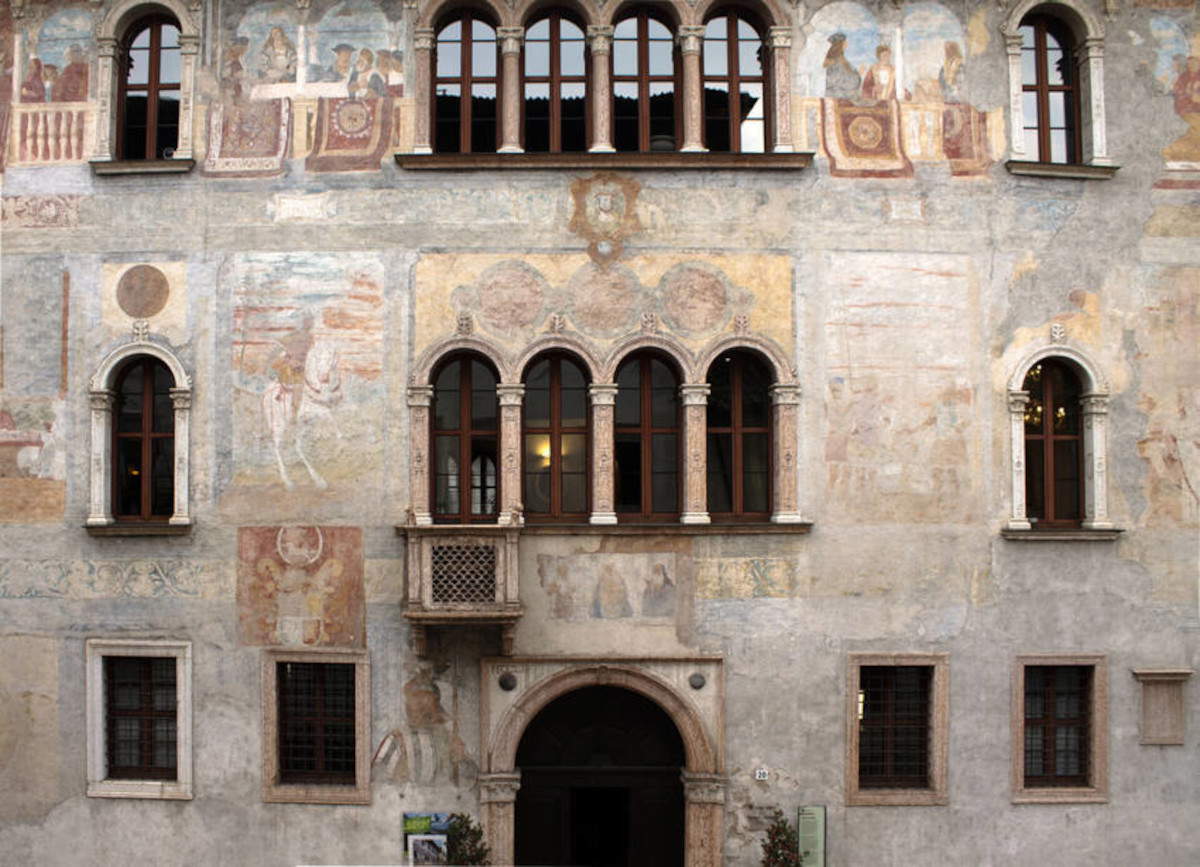The Municipality of Trento has undertaken an initiative aimed at protecting and safeguarding the frescoes on the facade of Palazzo Geremia, with the goal of ensuring their preservation and improving their legibility, in view of their historical value and the prominence of this decoration in the urban context of Trento’s historic center.
The wall paintings evoke the visit of Emperor Maximilian of Habsburg to Trent in October 1501, and they also depict legendary episodes of Republican Rome: among them, Marcus Curtius throwing himself on horseback into a chasm to save his homeland and Mucius Scevola laying his hand on fire before the enemy king Porsenna. Taken together, the frescoes constitute a valuable example of the “painted city,” a significant expression not only of history but also of the city’s cultural identity.
In 2024, a restorer specializing in cultural heritage was commissioned to draw up a plan for new in-depth investigations, necessary and preparatory to new restoration work on the facade. This technical study includes specific laboratory analyses to map the state of conservation of the work, offering updated feedback from archival sources and data already known or detectable through direct observation. Only at the end of this phase will it be possible to plan the restoration work, to be developed in agreement with the Superintendency of Cultural Heritage.
Currently, the facade shows various deterioration phenomena, mainly caused by runoff produced by rainfall. Further deterioration comes from condensation water, which joining with atmospheric dust particles generates opaque and darkening films. Before the 1986 restoration, for example, the surface was clouded by a patina of yellowish dirt, presumably caused by a previously used fixative.
The new project will therefore need to further study the degradation phenomena, analyzing both their extent and characteristics. In particular, it will be necessary to: survey and map the areas where detachments or disintegrations of the paint film and plaster are recorded; carry out laboratory analyses aimed at detecting any biological agents such as fungi and bacteria, capable of damaging the surfaces through mechanical actions (hyphae, thalli) or biochemical processes; and verify the current state of the decoration, documenting the presence of repainting and consolidating materials applied over time.
A crucial part of the investigation will be devoted to assessing the efficacy and durability of the products used in past restorations, with particular attention to their reversibility and interaction with the repainting layered over the years. This in-depth study will be crucial in outlining an appropriate intervention strategy capable of distinguishing between later additions and original elements. One of the main challenges of the project is to find a balance between the aesthetic enhancement of the facade, through possible pictorial reinstatements, and the need for protection from the elements, while remaining as adherent as possible to the authenticity of the original work.
 |
| Trent, plan to save frescoes in Palazzo Geremia kicks off |
Warning: the translation into English of the original Italian article was created using automatic tools. We undertake to review all articles, but we do not guarantee the total absence of inaccuracies in the translation due to the program. You can find the original by clicking on the ITA button. If you find any mistake,please contact us.